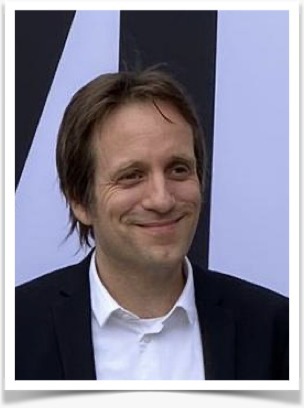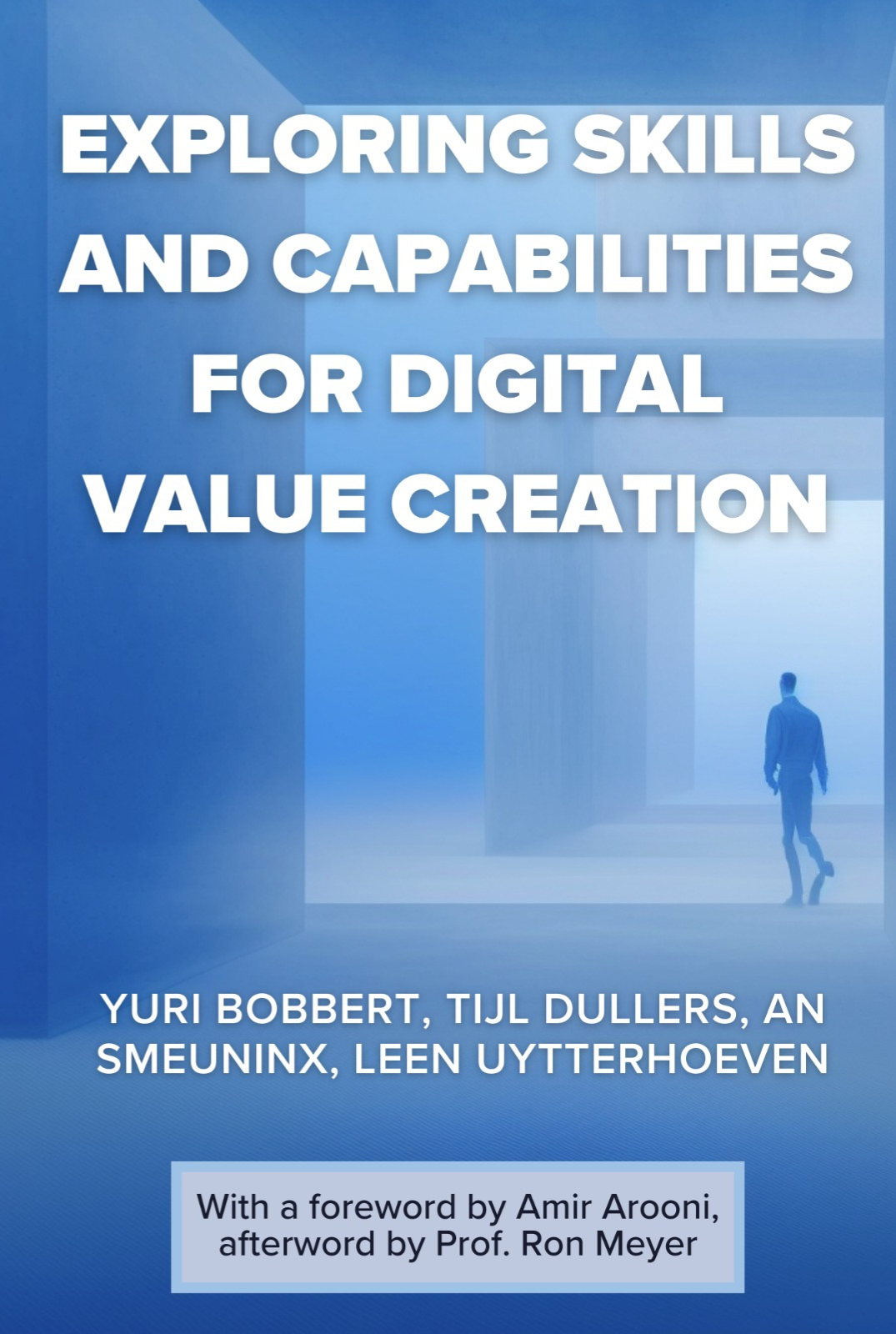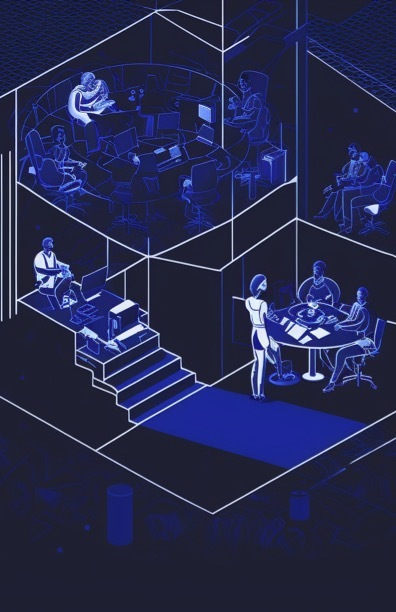EXPLORING SKILLS AND CAPABILITIES FOR DIGITAL VALUE CREATION
A Business Research Book about Business and IT Soft skills.
Book (Paperback)
€30.00
1 Hard copy of the book - Full color edition - Free shipping within BENELUX included

Thanks for your order!
You will receive an email shortly with your order details.

Oops, something went wrong
We couldn’t process your order. Please try again with a different payment method.
About the Book
About the Book


The book offers a truly unique and comprehensive perspective on the human aspects of information technology.
It outlines the HR dimensions of building and running technology in clouds and working in close relationships with business partners to deliver products to market that differentiate us in a unique fashion from the competition.
Numerous strategic approaches are offered by us as authors.
We are proud the book has a preface by CIO of the year Amir Arooni MBA (CIO Discover) and leadership professor Ron Meyer from Antwerp Management School and TIAS business school.
The book offers a truly unique and comprehensive perspective on the human aspects of information technology.
It outlines the HR dimensions of building and running technology in clouds and working in close relationships with business partners to deliver products to market that differentiate us in a unique fashion from the competition. Numerous strategic approaches are offered by us as authors.
We are honoured that the book has a preface by CIO of the year Amir Arooni MBA (CIO Discover) and leadership professor Ron Meyer from Antwerp Management School and TIAS business school.
Contact Us
Questions? Don't hesitate to leave your details and we'll get back to you
Thank you! Your form has been successfully submitted.
Whether you’re a newbie landing page creator or a pro, Unbounce gives you the tools to not only build custom landing pages, but also get more conversions on your website.



Benefit 1
21.6K
Et has minim elitr intellegat. Mea aeterno eleifend antiopam ad, nam no suscipit quaerendum. Et has minim elitr intellegat. Mea aeterno eleifend antiopam ad, nam no suscipit quaerendum. Et has minim elitr intellegat.
Active Customers
Et has minim elitr intellegat. Mea aeterno eleifend antiopam ad.
Content of the Book

SECTION 1: CORE STRATEGIC APPROACHES FOR HUMAN CAPITAL AS A DRIVER OF THE DIGITAL TRANSFORMATION
SECTION 1: CORE STRATEGIC APPROACHES FOR HUMAN CAPITAL AS A DRIVER OF THE DIGITAL TRANSFORMATION
21.6K
How to maximize human capital to gain a more competitive position? In this section we present models and theories to evaluate, measure and utilize human capital for the benefit of the individual and the collective organization.
Active Customers
Et has minim elitr intellegat. Mea aeterno eleifend antiopam ad.

SECTION 2: CORE STRATEGIC APPROACHES TO DESIGN A CLOUD TECHNOLOGY STRATEGY TO MAXIMIZE BUSINESS VALUE
21.6K
In this section we explore the technology, processes and models to construct and enhance cloud-based-technology environments through human interaction and capabilities. All with the objective of creating value.
Active Customers
Et has minim elitr intellegat. Mea aeterno eleifend antiopam ad.

SECTION 3: CORE STRATEGIC APPROACHES FOR RELATIONAL MECHANISMS IN FINANCIAL INDUSTRY AND TECHNOLOGY (FINTECH) COLLABORATION
21.6K
Curious about the frictions experienced between two different organizations with different norms and values (Corporate versus Startup) working together in relationships to create a product?
Active Customers
Et has minim elitr intellegat. Mea aeterno eleifend antiopam ad.


Benefit 1
21.6K
Et has minim elitr intellegat. Mea aeterno eleifend antiopam ad, nam no suscipit quaerendum. Et has minim elitr intellegat. Mea aeterno eleifend antiopam ad, nam no suscipit quaerendum. Et has minim elitr intellegat.
Active Customers
Et has minim elitr intellegat. Mea aeterno eleifend antiopam ad.


Benefit 1
21.6K
Et has minim elitr intellegat. Mea aeterno eleifend antiopam ad, nam no suscipit quaerendum. Et has minim elitr intellegat. Mea aeterno eleifend antiopam ad, nam no suscipit quaerendum. Et has minim elitr intellegat.
Active Customers
Et has minim elitr intellegat. Mea aeterno eleifend antiopam ad.


Benefit 1
21.6K
Et has minim elitr intellegat. Mea aeterno eleifend antiopam ad, nam no suscipit quaerendum. Et has minim elitr intellegat. Mea aeterno eleifend antiopam ad, nam no suscipit quaerendum. Et has minim elitr intellegat.
Active Customers
Et has minim elitr intellegat. Mea aeterno eleifend antiopam ad.

SECTION 4: COLLABORATION ENGINEERING (CE) AS FOUNDATION FOR TEAMWORK TO MAKE THE IT DREAM WORK
21.6K
Do you want to make smarter and more effective use of your human capital?
This chapter discusses how to promote collaborations between people in (IT&Business) teams.
Active Customers
Et has minim elitr intellegat. Mea aeterno eleifend antiopam ad.
About the Authors




Yuri Bobbert
25%
Yuri is Professor at Antwerp Management School and Global Chief Security strategy Officer (CSO) at ON2IT.
Data set




Tijl Dullers
25%
As IT Architect, Tijl has extensive experience helping companies across different industries get maximum business value from their IT-related investments.
Data set




An Smeuninx
25%
An has a proven track record as a business analyst in a wide range of industries. In her current role as a business analyst within the banking sector, she balances on the line between business and IT in the battle for digitalization and optimization.
Data set




Leen Uytterhoeven
25%
Leen is General Manager of IT infrastructure and operations at Vanbreda Risk & Benefits, Belgium's largest independent insurance broker and risk consultant.
Data set




Feature
25%
Et has minim elitr intellegat. Mea aeterno eleifend antiopam ad, nam no suscipit quaerendum.
Data set




Feature
25%
Et has minim elitr intellegat. Mea aeterno eleifend antiopam ad, nam no suscipit quaerendum.
Data set




Feature
25%
Et has minim elitr intellegat. Mea aeterno eleifend antiopam ad, nam no suscipit quaerendum.
Data set




Feature
25%
Et has minim elitr intellegat. Mea aeterno eleifend antiopam ad, nam no suscipit quaerendum.
Data set







Feature
25%
Et has minim elitr intellegat. Mea aeterno eleifend antiopam ad, nam no suscipit quaerendum.
Data set




Feature
25%
Et has minim elitr intellegat. Mea aeterno eleifend antiopam ad, nam no suscipit quaerendum.
Data set




Feature
25%
Et has minim elitr intellegat. Mea aeterno eleifend antiopam ad, nam no suscipit quaerendum.
Data set



Nowadays, knowledge is power, as it enables, creates, and innovates. Without it, a company is forced to survival mode, struggling to keep things running while watching their competition winning ground. A huge contradiction to this fact, with digital transformation being as essential as breathing to most firms, is the shortage or gap in human capital (HC) management and measurement within the IT landscape. Most companies already ramp up and recognize the need to merge their business and digital strategy; however, there is huge unexplored potential for value creation by addressing human capital management from within this context, and a necessity to mitigate the inevitable flip side of the coin: high risk of impact to value generation and competitive advantage when ignored. Addressing this gap is crucial for companies to stay relevant within a reign of global competition: there is no existing method or framework incorporating scientifically supported competencies for strategic management of IT managerial skills in a way that the firms’ performance is optimized.
This research focuses on determining which HR practices and processes can be developed to contribute to the high impact of leadership and the culture created by their core competencies and qualities, influencing the performance and value generation of an entire IT community.
Many if not all roles within an IT organization demonstrate IT managerial skills to some extent, but for the research of this thesis, the competence profiles were developed from the context of leadership, as these competencies are essential to building a strong, performing, and enabling structure. The knowledge of emerging technologies and creating designs and solutions can all be attracted, injected, developed, and supported by means of core resources and strategic leadership.
There is a central stage to iterate between the core activities of building and analyzing the design artifact, referred to as the design cycle. This cycle was supported by subject matter experts in human resources and consisted of pitching ideas, brainstorming, creative injections, and closed off with validation by means of interviews.
The Prototype Competitive skill framework built by this research introduces a method or framework that incorporates scientifically supported competencies and enables the strategic management of IT managerial skills to optimize a firms’ performance. This prototype artifact should be seen as a baseline proposition, capturing the right level of instructions to remain holistic and to provide a relevant competitive skill framework for IT organizations in general, leaving certain choices and adaptations open.
When expanding and hiring, there might be different choices to make within the activities and processes than coaching and growing an existing human resource base. The framework describes a specified collection of activities of which the events and outcomes are examples of what HR needs to work on with their coaching strategies. The activities outlined in the Framework form part of the solution, as they include conceptual and operational processes which are followed to maximize competency.
The main conclusions which we can derive from this research are that:
- Effective strategical leadership builds value in a knowledge- driven society and develops others’ capacities.
- Value generation is driven by effective coordination of elements: human, social and structural.
- Determining skillsets and validating core competencies will measure and provide ‘high potential’ elements for protecting or developing in order to contribute to the competitive advantage of a firm.
- Cultural aspects in relation to the performance of a firm are important within a competitive environment.
- Some characteristics in leadership are subject to having a huge positive impact on the competitive advantage of a firm as they build trust, friendship, and interpersonal bonds, essential for people to share knowledge and build valuable ideas to co- create.
- Transparent and spontaneous input to the assessment is essential to enable authentic measurement and evaluation, which means that a method should be selected that decreases the potential of interpretation and response optimization.
- Awareness of ‘self’ is key to building good relationships, which creates socially complex unique structures, which are a source of sustained competitive advantage.
- Development is a way for a resource to build a unique, company-specific set of skills, which has a high potential for sustainable competitive advantage.

SECTION 1: CORE STRATEGIC APPROACHES FOR HUMAN CAPITAL AS A DRIVER OF THE DIGITAL TRANSFORMATION




Organizations often adopt CC technology without carefully evaluating how cloud adoption will create business value. They often expect that the adoption of CC will bring them intrinsic value without considering the complex set of factors
involved to derive business value from such an investment effectively. This leads to unrealized benefits negatively impacting the organization's competitive positioning and increased operational complexity, increased costs, and loss of control over their IT assets, security-, and risk posture.
Organizations struggle defining a holistic executable Cloud strategy that aligns with their Business strategy and allows the linking and scoring of IT investments in Cloud Technology to clearly defined and measurable Business Benefits.
Cloud computing is a technology that has vast potential. Organizations that effectively use cloud technology can reap massive benefits in terms of organizational agility, business flexibility, and -performance. Furthermore, Organizations can significantly strengthen their competitive position by optimizing, extending, and innovating their business model. Additionally, Cloud Computing is an essential enabler for Digital Transformation. A sub- optimal Cloud Strategy inherently impacts the outcomes of Digital Transformation initiatives enabled by Cloud computing.
This led to the motivation to research how a Cloud Strategy can be designed to maximize Business Value derived from Cloud Computing Investments. And How to Create and Capture value from Cloud Computing to create sustainable competitive advantage.
The research method used to answer the research question mentioned above is known in the scientific literature as the Design Science Research Method (DSRM). The motivation to use DSRM as a research method is that I attempt to solve a practical problem in the real world by provide a prescriptive approach to design a Cloud Strategy that maximizes business value. To attempt to solve this problem, I needed both practitioner experience and scientific knowledge.
Furthermore, the method I wanted to develop could not be created solely using input from practice and scientific theory but also required applying design techniques, brainstorming, and creative processes to come to a solution. Provided the best match to the key ingredients needed to answer my research question using rigor, relevance, and creativity. To perform a first shaping of the “Value-Driven Cloud Strategy” artefact I opted to use a survey- based research strategy. The survey was distributed to people in the field with relevant practitioner experience.
Additionally semi- structured expert interviews were held to sharpen the artefact and to ensure that the design and development addressed the defined problem and requirements holistically. The interviews were intentionally conducted with experts that address the problem through totally different angles/perspectives.
The main findings of the research can be summarized as follows:
Cloud Adoption in itself will never lead to a competitive advantage in isolation. For competitive advantage to occur, organizations should slow down before they speed up and take the time to design a Value-Enabled Cloud Strategy to maximize the business value derived from Cloud Computing investments. Competitive advantage can occur when leveraging the transformative powers of Cloud Computing, bringing a solid strategy into fruition through a Cloud-ready operating model.
Organizations should apply strategic cloud management practices and implement strategic architecture patterns to develop these integrated capabilities.





The banking industry has undergone a significant digital transformation driven by innovative disruptors, such as fintechs. The introduction of new players in the market, who offer services to banks and the bank’s customers, puts pressure on the (traditional) banks to reinvent themselves and calls for a review of compliance-oriented regulations, leading to pressure on the regulator.
The speed, complexity, and innovative nature of the disruption means that banks are looking for technical experts (mostly fintechs) to enter into partnerships with and thus benefit from co-expertise.
Research showed that the simultaneous use of relational and contractual mechanisms within a partnership has a positive impact on, for example, collaboration cost and in creating a solid partnership. Within the banking industry, however, the preference remains mainly for contractual mechanisms. The benefits of using relational mechanisms are underestimated.
As partnerships become more important within the banking industry, due to the technological innovations that fintechs offer and that banks want, and partnerships are very likely to evolve into the norm, the industry will face cost inefficiency and underperforming partnerships. This could lead to the premature termination of good partnerships and could have an impact on the stability of the industry.
This research identified the critical relational mechanisms and success factors that can be used in interorganizational partnerships within the banking industry and provides guidelines for their operationalization.
Next the research includes recommendations to the regulator on how to support the operationalization of these critical relational mechanisms and advice on building stronger relationships between all actors in the industry. The research concludes with eight steps the regulator should take to improve the connection with and boost knowledge within the industry and create a resilient and future-proof policy body.
The research includes a survey to gain insights into the expertise within the industry and to determine the idiosyncratic and economic drivers used to screen potential partners. The survey looked for relational mechanisms considered during the negotiation phase and throughout the partnerships and the success factors for building long-term partnerships. To evaluate and test the survey findings on the relational mechanisms used in interorganizational partnerships within the banking industry, a group support system was used to facilitate a panel discussion with experts.
The most prominent mechanisms are related to building trust and showing commitment. During the panel discussion, these most commonly used mechanisms were validated and prioritized by experts from within the banking industry and strategies were discussed on how to put these mechanisms into practice.





The consequences of the coronavirus have taught us a lot about the importance of long-distance communication, collaborations and the importance of digital solutions. This has also had a major impact on the way organizations set up team meetings. In the Agile way of working we refer to Stand-Ups to discuss periodic user stories and epics, End of Sprints and Retrospectives.
More and more of these meetings are held online via conferencing tools such as Zoom or Microsoft Teams. However, this is not yet the ideal circumstance for everyone seeking to understand underlying emotions and motivations. Meeting each-other feels unnatural to many. Some meeting frustrations are; Dominant participants often come out even more clearly, so that the quieter types come even more into the background, while they are often full of good ideas.
This chapter discusses how to promote collaborations between people in (IT&Business) teams. With the aim of using human capital smarter and more effectively.
CE is a science that provides pertinent pointers on how to enable "on the job" learning and education and transform the manager into "learning facilitator" for teams. It discusses core capabilities for IT leaders/ managers to make teams and team meetings, like stand ups and retrospectives, work more efficiently and more fun.
At the end of this section it addresses the use of Group Support Systems as effective collaboration tool that can be used to discuss and operationalize many of the items mentioned in the other sections. Such as: Business modelling, Business Model Canvas, SWOT analysis, Cloud Operating Model selections, Team performance reviews and partnership collaborations. it finishes off with tangible samples in the form of templates and agenda formats (ThinkLets).
The section concludes with a number of concrete tools and strategic approaches to improve team collaborations.











